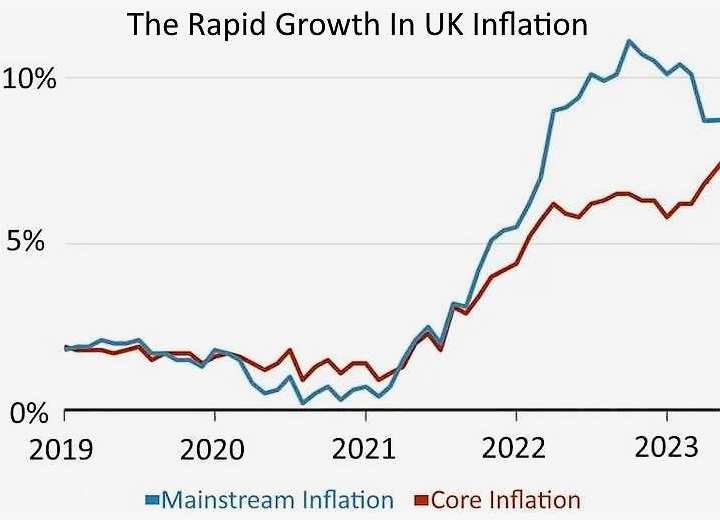

Mainstream inflation failed to fall in May, core inflation, which excludes energy, food, alcohol and tobacco rose by 7%.
The core inflation rise is the highest since 1992 and the fall in mainstream inflation is not keeping up with most developed countries. Reasonable indicators of the position the UK finds itself in.
Brexit has been blamed and did have an effect, which may increase as import controls postponed during the pandemic begin. Yet there is no single cause, with Russia’s invasion of Ukraine and pandemic recovery playing a part.
There are reasonable arguments that the level of government bailouts during the pandemic influenced current inflation. Neither are we so far from the 2008 financial crisis and the resulting economic measures.
Investment patterns could be argued to be a factor, education, training, productivity levels. The picture is complex and we can all have different ideas on lead factors but the core question is how to bring about a solution.
The Traditional Approach
Raising interest rates is a long standing response to inflation. Borrowing becomes more expensive for short term use, those with mortgages and loans see monthly payments go up, saving can be encouraged by better rates.
When people have less money to spend, fewer items are bought and reduction in demand should slow, or stop price rises. The reason the Bank of England recently raised interest rates for a 13th consecutive time, from 4.5% to 5%.
Whether that is working as intended in a complex situation continues to be debated. Businesses will also borrow less, there are concerns on investment and job creation, bringing the possibility of self induced recession.
Equally, the US and European central banks have been hiking interest rates and inflation there seems to be heading in the right direction. The UK may have different contributing factors to deal with.
Lessons From Logistics
Pressures on the supply chain are not new, with fuel prices, staffing and other issues causing distress for a few years. The events which have followed added to the strain and a need to improve efficiency.
Prices for customers can only be renegotiated so far, neither is a wait and see approach likely to help. Thoughtful analysis, planning and controlled investment tend to be a better route to a sustainable future.
Of course other areas of business have had to improve but freight and logistics are a field we know well and a prominent sector. One which in recent years has needed to grasp a philosophy which is anti-inflationary.
Supply Side Reforms
A wide term, which can include cutting business taxes, or increasing national investment. Political choices which at present are subject to practical barriers, with UK debt already higher than our annual GDP.
The first three of Rishi Sunak’s five promises were to halve inflation, grow the economy and reduce national debt. Wishes which could appear in conflict with each other, although a change of order is a thought.
Supply side intervention is about pushing supply up, rather than demand down, to lower prices. This doesn’t mean that other approaches should be abandoned, or governments should forsake all business taxes, simply look at opportunities.
Productivity First
Tax based encouragement for investment could make a difference to productivity and employment, revenue losses may be offset by reduced benefit payments. Access to the right staff is equally important.
National investment in UK training can be part of this, along with targeted migration. Renegotiating the position with Europe is one possibility, improving the relationship on working rights could help in both directions.
Cutting red tape for EU trade looks a further option. A few proven systems are working well, such as the ATA carnets for the EU we supply, others are a hindrance. Neither do these thoughts need to apply solely to Europe.
Few can argue against a requirement to raise interest rates, neither are we in a position to launch massive public spending. Unleashing business growth can still be a notable part of the solution and reduce the pain.

